|
|
|
|
[Index]
[Back] |
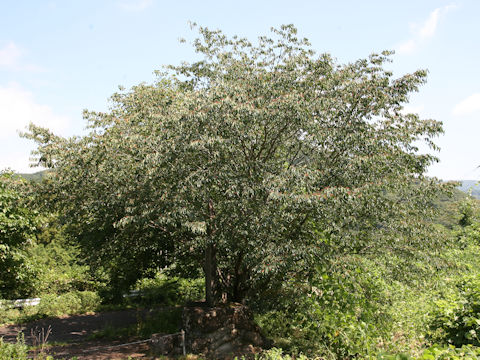 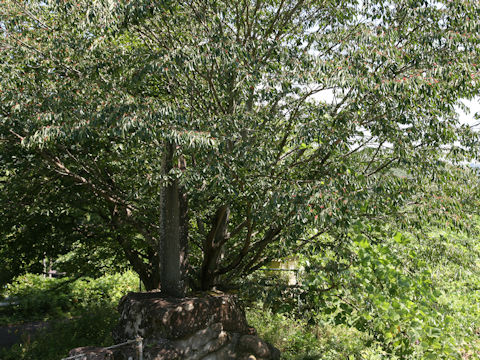 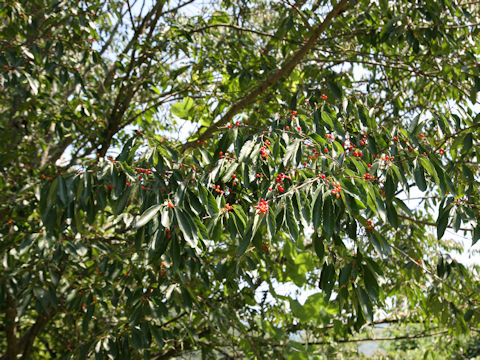 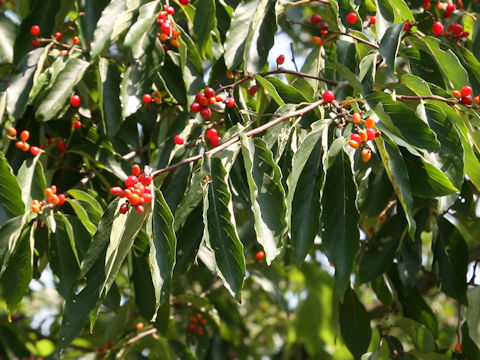 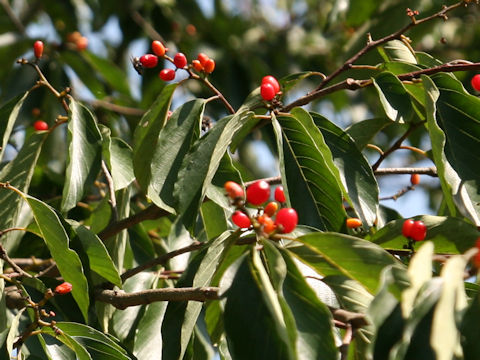 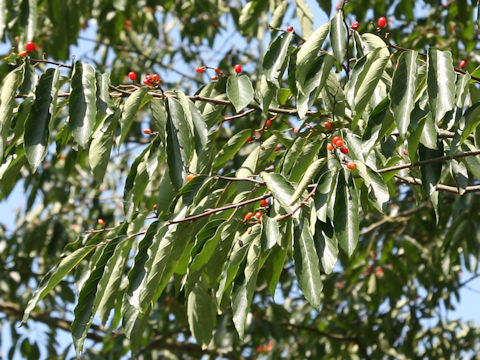 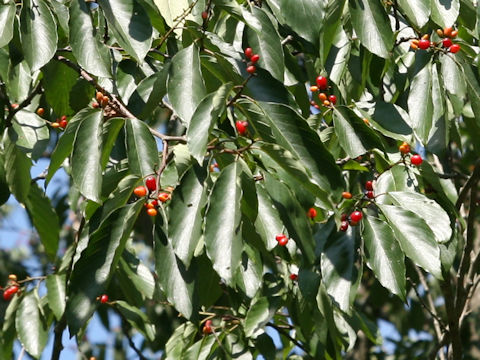 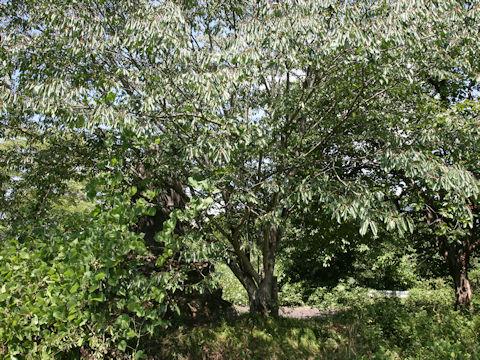 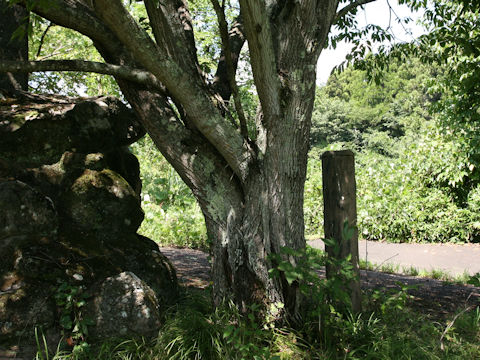 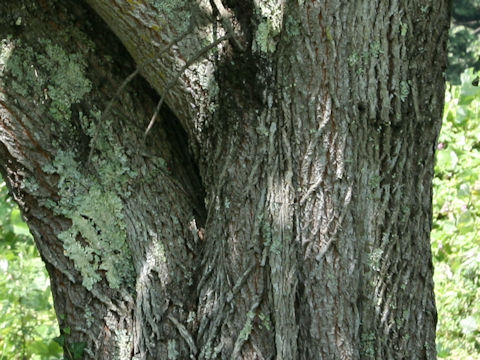 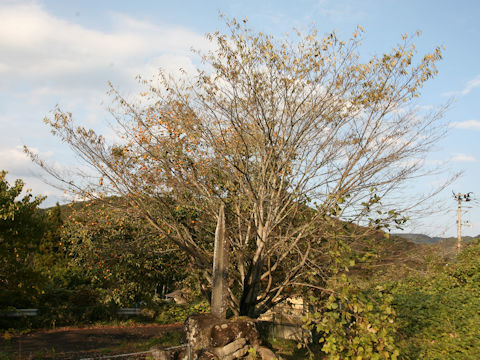 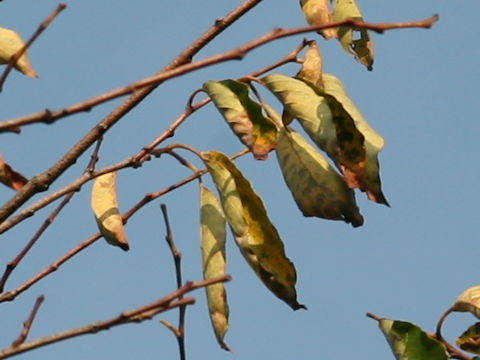 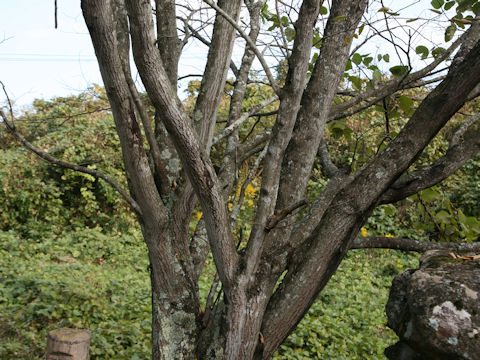 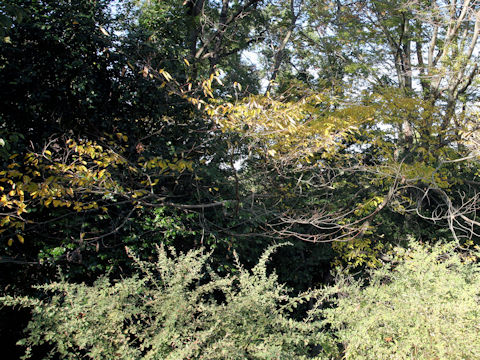 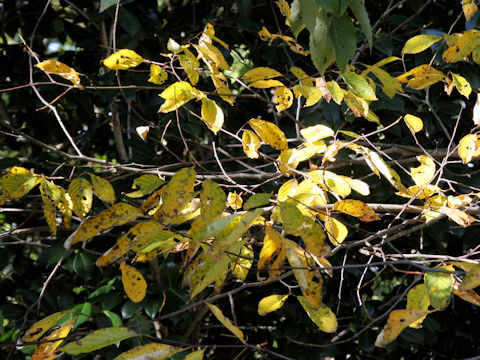 |
|
|
|
わが国の本州、宮城県以南から四国、九州、それに朝鮮半島南部に分布しています。山地の林内や岩礫地にまれに生え、高さは10メートルほどになります。葉は濃緑色で長楕円形または卵状楕円形、縁は全縁で先端は鋭く尖ります。葉はふつう互生しますが、環境によってはコクサギ型葉序で2個ずつ互生します。6月ごろ、枝先と上部の葉腋から集散花序をだし、淡黄色の小さな花を3〜6個ずつ咲かせます。果実は長楕円形から卵形の核果で、熟すにつれて緑色から黄色、赤色へと変わります。和名は、明治17年に植物学者の牧野富太郎氏が、高知県越智町にある横倉山で発見したことに因みます。宮城県白石市小原には「ヨコグラノキ北限地帯」がありますが、これは植物研究者の齋藤四郎治氏(明治5年〜昭和21年)によって発見され、昭和17年に天然記念物に指定されています。中国語では「日本小勾兒茶(riben xiao gou er cha)」と呼ばれます。 なおクロウメモドキ科ヨコグラノキ属には3種あり、わが国は1種、中国には2種が存在しています。 (1) Berchemiella wilsonii 小勾兒茶(xiao gou er cha)、安徽省・湖北省・浙江省に分布。 (2) Berchemiella yunnanensis 滇小勾兒茶 (dian xiao gou er cha)、雲南省に分布。 |
|
|
クロウメモドキ科ヨコグラノキ属の落葉小高木で、学名は Berchemiella berchemiifolia。英名はありません。 |
|
|
The "Yokogura-no-ki" (Berchemiella berchemiifolia) belongs to Rhamnaceae (the Buckthorn family). It is a semi-tall deciduous tree that is distributed from Miyagi Prefecture of Honshu southward to Shikoku, Kyushu in Japan, and the southern part of the Korean Peninsula. It grows rarely in forests and rocky areas in mountainous regions, and grows up to 10 m high. The leaves are dark green, oblong or ovate, with entire margins and sharply pointed tips. The leaves are usually alternate, but depending on the environment, two alternate leaves may be produced in orixate phyllotaxis. Around June, it produces cymes at the tips of branches and in the upper leaf axils, and produces 3 to 6 small, pale yellow flowers each. The fruit is a oblong to ovate kernel that turns from green to yellow to red as it ripens. The Japanese name comes from its discovery by botanist Tomitaro Makino in 1884 at Yokogura-yama in Ochi-cho, Kochi Prefecture. The "Yokogura-no-ki northern limit zone" is located in Obara, Shiroishi City, Miyagi Prefecture, and was discovered by botanical researcher Shiroji Saito (1872-1946), who designated it a natural monument in 1942. In Chinese, it is called "日本小勾兒茶" (riben xiao gou er cha). Berchemiella is a genus of plants in the family Rhamnaceae. It includes three species, one found in Japan and two in China. (1) Berchemiella wilsonii "小勾兒茶" (xiao gou er cha) is distributed in Anhui, Hubei, and Zhejiang Provinces. (2) Berchemiella yunnanensis "滇小勾兒茶" (dian xiao gou er cha) is distributed in Yunnan Province. |
|
|
[上・中1〜9] 宮城県白石市小原にて、2023年08月17日撮影。 [中10〜中12] 同上にて、2023年10月27日撮影。 [中13・下] 宮城県仙台市太白区「仙台市野草園」にて、2024年11月10日撮影。 |
|
|
|
Shu Suehiro |